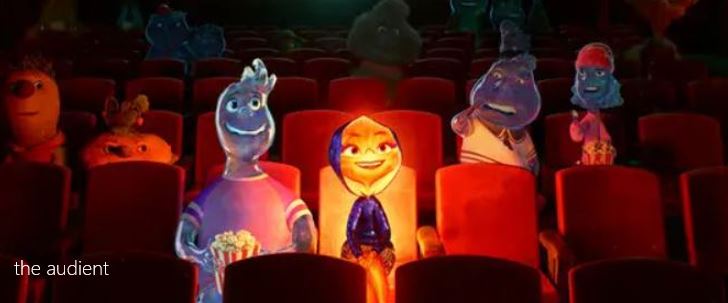 This is the latest in
my monthly series Audient Audit, where
I question my own records about movies I say I’ve seen.
This is the latest in
my monthly series Audient Audit, where
I question my own records about movies I say I’ve seen.
Charlie Chaplin’s Modern
Times may bear the most embarrassing reason for why I thought I saw it.
There are two, actually.
1)
“I’ve seen that scene of Charlie Chaplin running
through the gears of that machine, therefore I must have seen the movie.” (It
was likely in some kind of Oscar clip montage.)
2)
“I must have seen Modern Times just because it’s a classic and I must have seen it.”
Not great reasons, you will agree.
The second one is particularly faulty reasoning, as I have
never been the kind of cinephile to devour silent films. I know there are many
of us who eat up every example of the origins of cinema, but I am not one of
them. So the idea that I “must have seen it” is silly, because I’ve seen only
30-40 silent films in my entire life, and nearly half of those were in the past
few years, when I devoted one of these annual viewing series to the topic in
2016.
I think I figured I saw it around the same time I saw City Lights, a film I think of in the
same breath as Modern Times, if you
will allow that phrasing. I remember that viewing, which took place in my old
apartment in New York City sometime between 1998 and 2001 (as those were the
years I lived there), because I decided to smoke a cigar as accompaniment to it.
And I remember that because I don’t
like cigars, and that was one of fewer than ten of those I’ve ever smoked.
Modern Times is
indeed a silent movie, but by rights it shouldn’t be. It came out in 1936,
which is nearly a decade after sound was introduced to the movies. Chaplin was
resistant to cutting over, of course, because he had thrived as a silent actor
and was worried he could not make the transition to talkies. (Though 1940’s The Great Dictator, a talkie, might be
my favorite of his films.) In fact the film functions as something of a
metaphor for this sea change, which put a lot of actors (though not Chaplin)
out of work. Chaplin’s character and his love interest/female friend, referred
to as “The Gamin” (Paulette Godard), spend most of the movie looking for work.
Although automation is the thing in the film that’s preventing them from
landing a steady job, in the world it was this change in the way films were
made that Chaplin perceived as his primary obstacle.
I should clarify that it’s not a silent film the way The Gold Rush (1925) is a silent film.
It actually does have spoken dialogue, but that dialogue comes only from the
boss in Chaplin’s factory, which is consistent with Chaplin’s complaint about
The Man making his style of filmmaking outmoded. It also has Chaplin singing in
his final number. There are sound effects and other diagetic sounds
interspersed throughout. But there’s also silent film’s typical reliance on
pantomiming and physical comedy, as well as title cards, though Chaplin doesn’t
rely heavily on them, consistent with his show-don’t-tell approach. The fact
that he used the title cards, but also included bits of dialogue that proved he
didn’t have to, gives further heft to Chaplin’s perspective.
Modern Times has
some great, laugh-out-loud set pieces. I think my favorite, mostly because I
laughed out loud the most, was when he’s being fed by the automated feeding machine,
which pushes food (and sometimes machine parts) into his mouth, and which goes
haywire rotating a corn cob dangerously close to his mouth. Chaplin’s reactions
are priceless, particularly his eyes, as his mouth is largely obscured by the
corn cob. I also really enjoyed the blind roller skating right next to the
department store dropoff. I'm not sure how he did it so convincingly without, you know, dying.
The film doesn’t amount to more than the sum of its set
pieces, though. Other Chaplin films I’ve fallen in love with in recent years
have a fair amount of heart – I’m thinking primarily of The Kid, but even The Great
Dictator has a huge amount of passion and heart in its final political
speech. Modern Times doesn’t have
this same feel to it and often feels like a loosely connected succession of
bits. The bits really work, but the whole is less than the sum of its parts.
That of course still equates to a four-star (out of five)
rating, as this is a substantial achievement and a fun watch. It’s just near
the bottom of the Chaplin features I’ve seen, in part because the others are so
superlative.
And to be clear, I definitely had not seen it prior to this
week.
On to July. I don’t have my movie picked out yet.

No comments:
Post a Comment